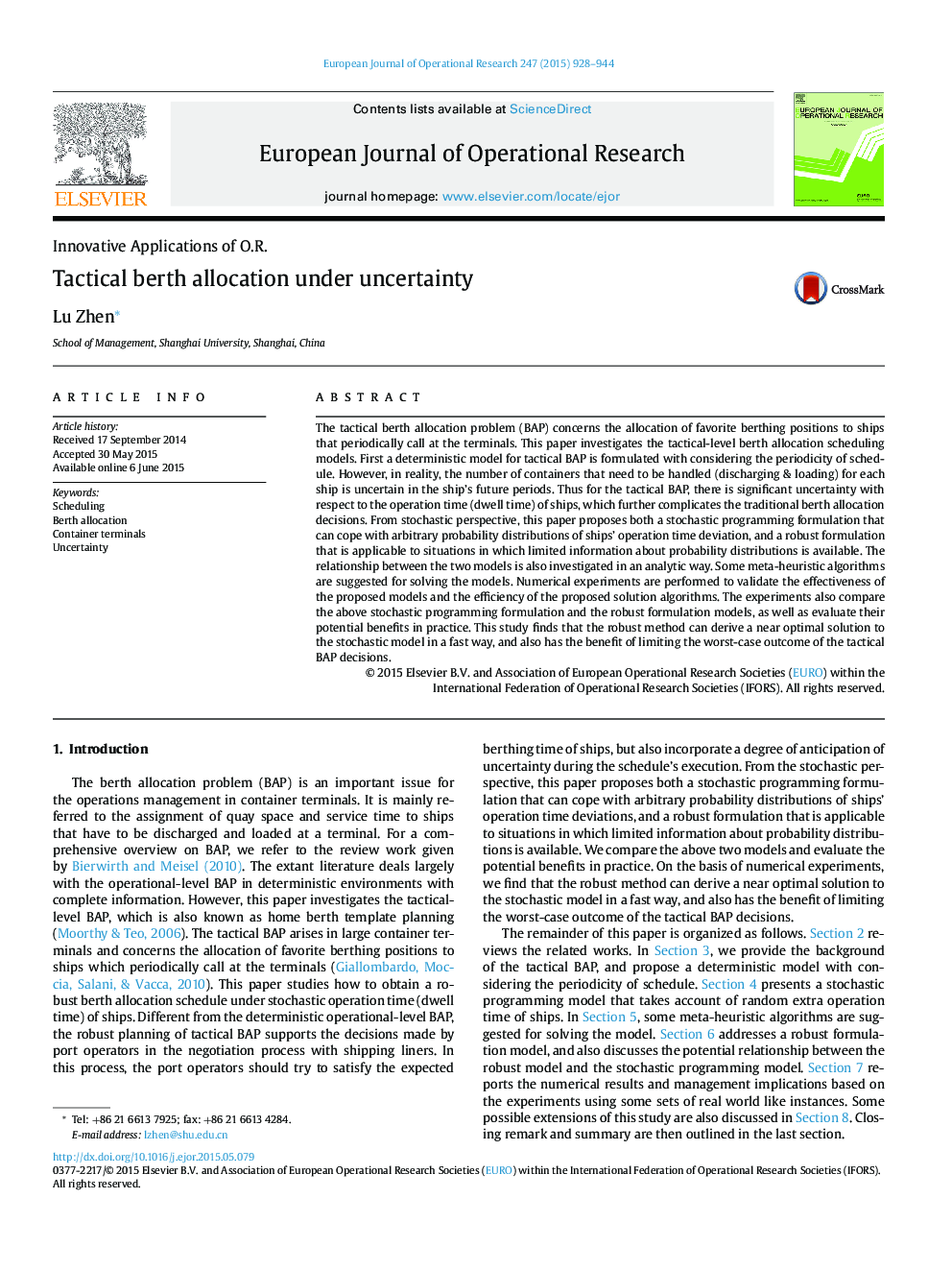| Article ID | Journal | Published Year | Pages | File Type |
|---|---|---|---|---|
| 477977 | European Journal of Operational Research | 2015 | 17 Pages |
•This paper investigates the tactical-level berth allocation problem.•This paper proposes both a stochastic programming formulation and a robust formulation.•The relationship between the two models is also investigated in an analytic way.•Some solution methods are suggested for solving the models.•Numerical experiments are performed to validate the effectiveness of the models.
The tactical berth allocation problem (BAP) concerns the allocation of favorite berthing positions to ships that periodically call at the terminals. This paper investigates the tactical-level berth allocation scheduling models. First a deterministic model for tactical BAP is formulated with considering the periodicity of schedule. However, in reality, the number of containers that need to be handled (discharging & loading) for each ship is uncertain in the ship's future periods. Thus for the tactical BAP, there is significant uncertainty with respect to the operation time (dwell time) of ships, which further complicates the traditional berth allocation decisions. From stochastic perspective, this paper proposes both a stochastic programming formulation that can cope with arbitrary probability distributions of ships’ operation time deviation, and a robust formulation that is applicable to situations in which limited information about probability distributions is available. The relationship between the two models is also investigated in an analytic way. Some meta-heuristic algorithms are suggested for solving the models. Numerical experiments are performed to validate the effectiveness of the proposed models and the efficiency of the proposed solution algorithms. The experiments also compare the above stochastic programming formulation and the robust formulation models, as well as evaluate their potential benefits in practice. This study finds that the robust method can derive a near optimal solution to the stochastic model in a fast way, and also has the benefit of limiting the worst-case outcome of the tactical BAP decisions.
